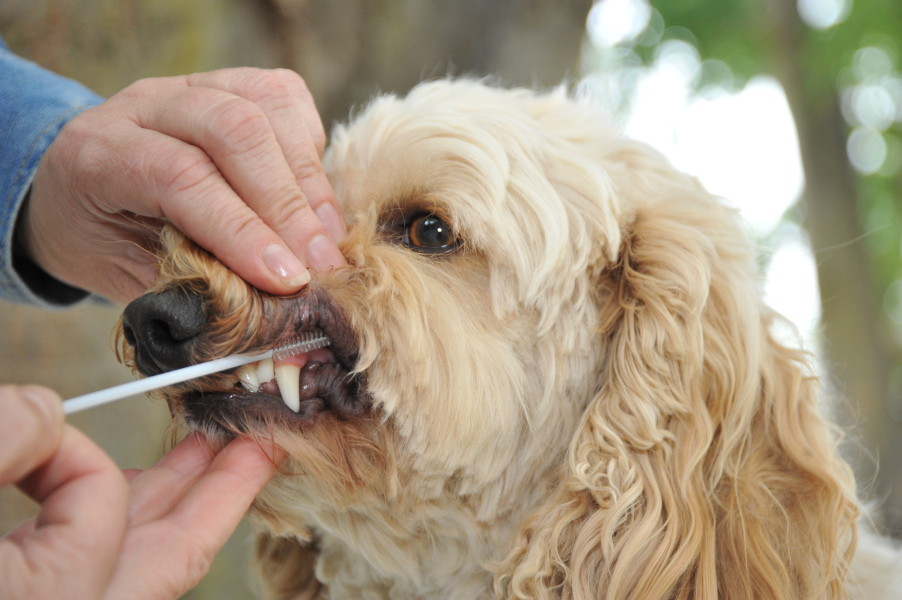Quick Summary
Click here for Price and Turnaround Time
Phenotype: Neuromuscular disorder characterized by generalized muscle weakness and fatigue, usually induced by exercise. Affected puppies collapse after a few minutes of rigorous exercise, but recover after some rest. Signs usually appear between 6 to 12 weeks of age.
Mode of Inheritance: Autosomal recessive
Alleles: N = Normal/Unaffected, CMS = Congenital myasthenic syndrome
Breeds appropriate for testing: Labrador Retriever
Explanation of Results:
- Dogs with N/N genotype will not have congenital myasthenic syndrome and will not transmit this congenital myasthenic syndrome variant to their offspring.
- Dogs with N/CMS genotype will not have congenital myasthenic syndrome, but are carriers. They will transmit this congenital myasthenic syndrome variant to 50% of their offspring. When bred to other carriers, matings are expected to produce 25% congenital myasthenic syndrome affected puppies.
- Dogs with CMS/CMS genotype will have congenital myasthenic syndrome.
Results of this test can be submitted to the OFA (Orthopedic Foundation for Animals)
Labrador Retriever Health Panel 1
$165 per animal
Labrador Retriever Health Panel 2
$180 per animal
Sample Collection
Dog DNA tests are carried out using cells brushed from your dog's cheeks and gums. The preferred cytology brushes are sent to you by mail, or you may provide your own brushes. For accepted alternative brushes, click here
We recommend waiting until puppies are at least three weeks old before testing.

Step-By-Step:
- Make sure the dog has not had anything to eat or drink for at least 1 hour prior to collecting sample.
- When swabbing puppies, isolate each puppy from the mother, littermates and any shared toys for 1 hour prior to swabbing. Puppies should not have nursed or eaten for 1 hour prior to collecting sample.
- If collecting samples from more than one dog, make sure to sample one dog at a time and wash your hands before swabbing another dog.
- Label brush sleeve with name or ID of dog to be sampled.
- Open brush sleeve by arrow and remove one brush by its handle.
- Place bristle head between the dog’s gums and cheek and press lightly on the outside of the cheek while rubbing or rotating the brush back and forth for 15 seconds.
- Wave the brush in the air for 20 seconds to air dry.
- Insert brush back into sleeve.
- Repeat steps 5 - 8 for each unused brush in sleeve on a fresh area of cheek and gums. Make sure to use and return all brushes sent by the VGL. In most cases, it will be 3 brushes per dog. If using interdental gum brushes, please note that the VGL requires 4 brushes per dog and only moderate or wide interdental gum brushes are accepted.
- Do not seal brushes in sleeve.
- Place all samples in an envelope and return to the address provided.
ATTENTION:
- Do not collect saliva/drool – the key to obtaining a good sample is getting cheek cells on the swab
- Do not rub swab on the dog’s tongue or teeth – this will result in poor quality sample
- Do not collect a sample from a puppy that has recently nursed – the mother’s genetic material can rub off on the puppy’s mouth and contaminate the sample
Congenital myasthenic syndrome (CMS) is an inherited neuromuscular disorder characterized by severe generalized skeletal muscle weakness and fatigue, usually induced by exercise. Puppies with this syndrome generally collapse after a few minutes of rigorous exercise, but typically recover after some rest. Signs usually appear between 6 to 12 weeks of age.
CMS is caused by a single nucleotide mutation (c.1010T>C) in exon 14 of the Collagen-like Tail Subunit of Asymmetric Acetylcholinesterase (COLQ) gene. This allele is predicted to cause improper anchoring of ColQ protein to the basal lamina of muscle cells and impair the termination of signal transmission within the neuromuscular junction, where motor neurons and muscle fibers connect. Malfunction of signal transmission affects muscle contraction. The mode of inheritance is autosomal recessive, which means that males and females are equally affected and that two copies of the mutation are needed to cause CMS.
According to the referenced paper below, only 2 Labrador Retrievers were reported to be affected and homozygous for this mutation but 16 out of 58 (28%) of their relatives were carriers. However, carriers can transmit the recessive allele to their offspring and can thus produce affected offspring if their mate also contributes a recessive allele. No carriers were found among 288 unrelated Labrador Retrievers, which suggests that the mutation is not widespread within the breed. Coincidentally, 2 human CMS patients were reported to be homozygous for an identical mutation (c.1010T>C), thus supporting the causality of the dog mutation. Screening of a random set of Labradors Retrievers at the VGL resulted in a frequency of 1.1% for the CMS disease allele.
Testing for CMS assists clinicians with differential diagnosis of CMS and helps breeders identify carriers among breeding stock and select appropriate mates to reduce the risk of producing CMS-affected offspring.
